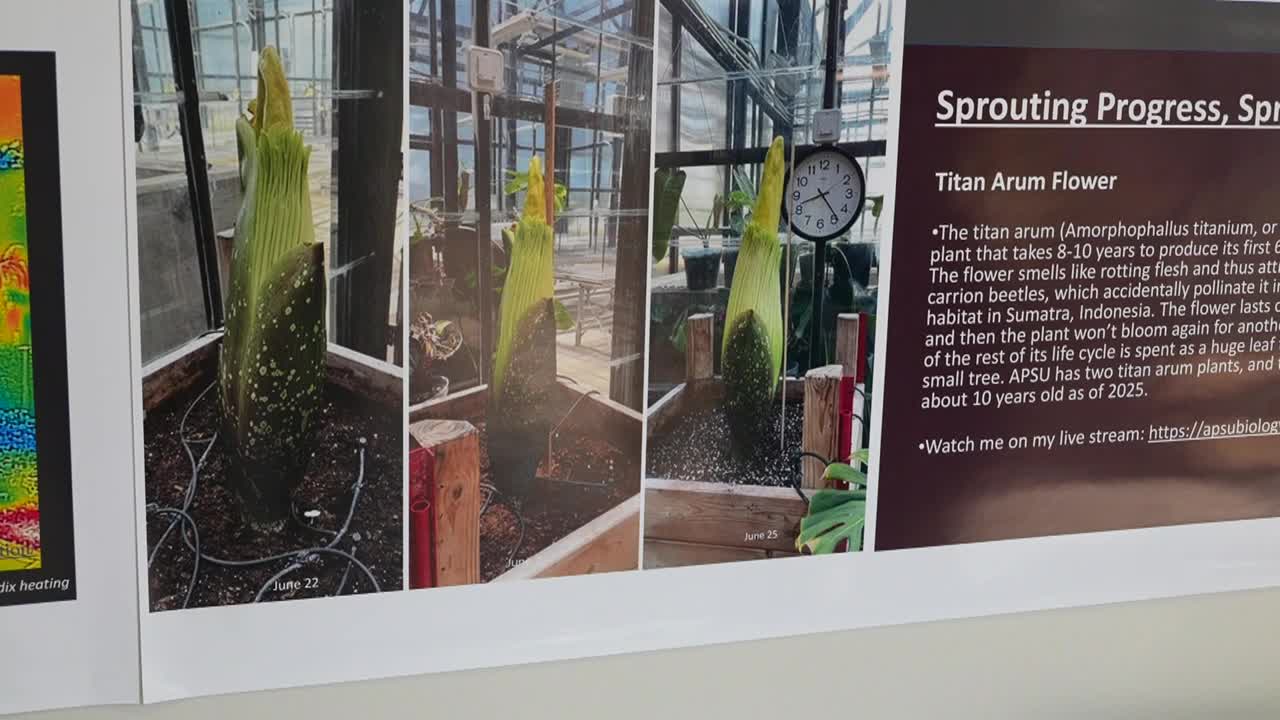CLARKSVILLE, Tenn. (WTVF) — A botanical rarity is drawing attention at Austin Peay University, where one of the world's most unusual plants is putting on a spectacular but brief show.
Unlike its name, the corpse plant is very alive. But it earned its morbid nickname honestly.
"It's all going to look at smell like rotten flesh," said Dr. Karen Meisch, Dean of the STEM College at Austin Peay University.
Miesch explained that fewer than a thousand of these plants exist in the world today.
"This is the titan arum normally found or natively found in Indonesia on the island of Sumatra," she said.
The university houses two corpse plants. These plants take about seven to ten years to bloom, and when they do, the resulting flower only lasts a day or so.
"Athena's outer leaves dropped Sunday morning and they will typically bloom within 2 to 5 days," Meisch said.
Athena's bloom takes just two weeks to grow from a small sprout into a towering flower, and it won't come back for another two to five years.
"Eventually it will go back 100 percent into the soil and it will be there for about 3-4 months," Meisch said.
In between flowerings, the plant grows for nine-month periods, falls off, and continues the cycle.
"Even though it looks like a tree it is a single leaf," Meisch said.
The flower attracts beetles with its pungent smell when it blooms to pollinate.
"The beetles have to find another flower that's in bloom in that 24-hour period," Meisch said.
This rare bloom reminds us to treasure nature's fleeting wonders.
Have you visited the corpse plant at Austin Peay? I'd love to see your photos or hear about your experience with this rare botanical phenomenon! Email me directly at Kim.Rafferty@NewsChannel5.com to share your story.
This story was reported by Kim Rafferty and has been converted to this platform with the assistance of AI. Kim and our editorial team verifies all reporting on all platforms for fairness and accuracy.

This is a story I immediately went home and showed my boys - young athletes with big dreams. The Vanderbilt football team's success has stolen the spotlight - what I love about Steve Layman's story is he reveals the individual hardships it took to get there. As Clark Lea says, "we all have scuff marks." This team proves perseverance pays off!
- Carrie Sharp





